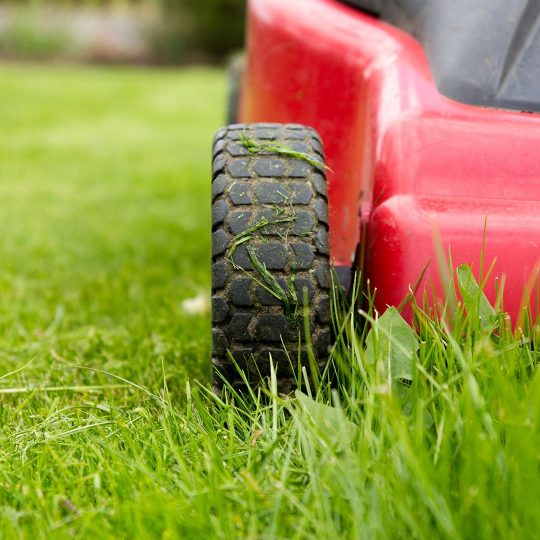Tips for How to Determine the Right Mowing Height
It All Depends on Your Grass Type & Season
Posted
March 21, 2024

After being dormant all winter, your grass is starting to transition back into growing season—also known as mowing season. A well-manicured lawn is not only beautiful, but it’s also healthy and less likely to attract weeds, pests, and disease. But achieving that lush green carpet take more than mowing every week. The right height makes all the difference. Here are some tips on how to determine the right mowing height for your lawn. Not only will grass be healthier, but it may also mean it doesn’t need to be cut as much as you think.
Why Mowing Matters
Mowing your lawn at the proper height is critical for several reasons:
- Root Development. Cutting grass too short can inhibit root growth, leading to a shallow root system. This makes your grass more susceptible to drought and unable to absorb nutrients.
- Weed Control. Taller grass shades the soil, preventing weed seeds from germinating and competing with your grass. Also, if you cut your grass too short and scalp it, it could lead to bare spots which are prime locations for weeds to spring up.
- Disease Resistance. Longer grass blades can help keep the soil cooler and reduce moisture evaporation, creating a less hospitable environment for disease-causing organisms.
- Overall Lawn Health. Proper mowing height encourages healthy grass growth, resulting in a denser lawn that can better withstand foot traffic, pests, and environmental stresses.
How to Determine the Right Mowing Height
There are several factors to consider when trying to determine how tall or short your grass should be.
- Grass Type. Different grass species have different optimal mowing heights. Cool-season grasses, like Kentucky bluegrass and fescue, should be mowed higher; while warm-season grasses, like Bermuda and Zoysia, can be mowed lower.
- Season. Mowing height should be adjusted throughout the year. Some grasses go dormant again in the summer, meaning they don’t need to be mowed as much. Plus, you may want to mow higher during the hot summer months to help your grass retain moisture.
- Growth Rate: Adjust your mowing frequency and height based on how quickly your grass is growing. During periods of rapid growth in the early spring and fall, you may need to mow more often and at a higher height.
- Condition of the Lawn. If your lawn is stressed due to drought or disease, raising the mowing height can help it recover by reducing stress on the grass.
Once you determine the proper height, you can adjust the settings on your mower accordingly.
Tips for Mowing at the Right Height
No matter what type of grass you have or what season it is, keep these mowing tips in mind.
- Avoid Scalping. Cutting the grass too short can leave your lawn vulnerable to weeds and diseases. Aim to remove no more than one-third of the grass blade in a single mowing.
- Proper Mower Care. Ensure your mower blades are sharp and set to the appropriate height for your grass type.
- Alternate Mowing Patterns. Change the direction you mow each time to help prevent soil compaction and promote upright grass growth.
- Leave Grass Clippings. Mulching grass clippings back into the lawn provides nutrients and helps retain moisture. Added bonus, a mower makes mulching fall leaves in the lawn a breeze.
Choosing the right mowing height is essential for maintaining a healthy, vibrant lawn. By understanding your grass type, adjusting mowing height based on the season and growth rate, and following proper mowing practices, you can enjoy a beautiful lawn throughout the year. Need help maintaining your healthy grass? Contact Cardinal Lawns to learn about our various lawn care services.
Special Offer for New Customers
Two Free Lawn Care Treatments
Hurry! Offer Expires July 31, 2024